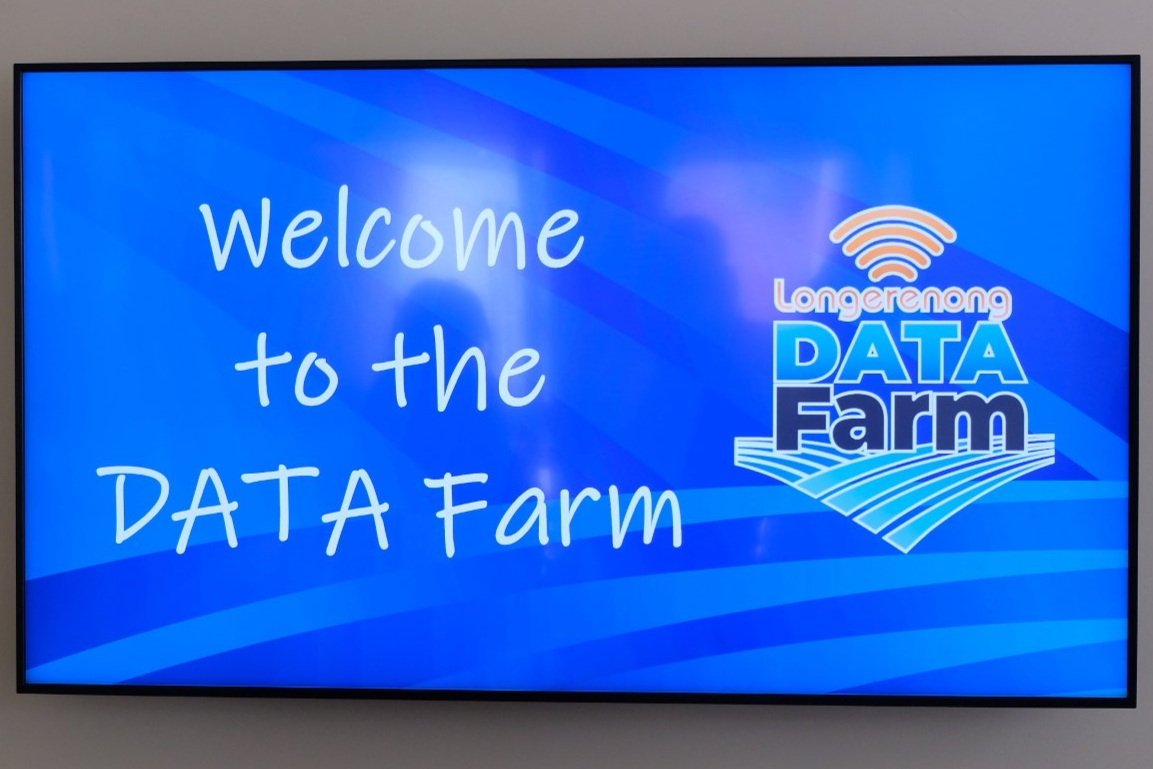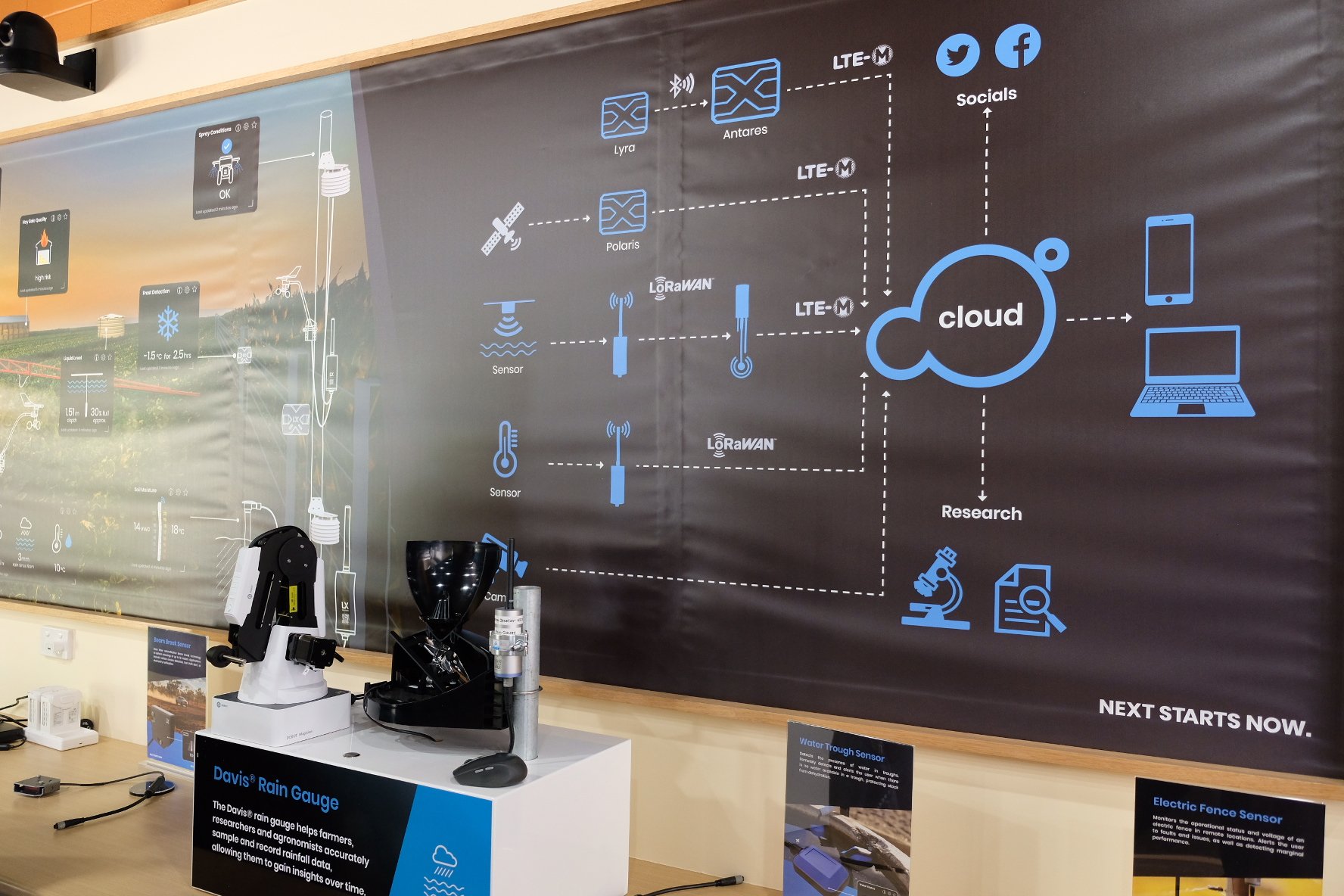Longy College’s Data Farm: The new normal of digital farms for the Australian Grain Industry
The life of an agtech founder is unique in its own way, on top of the business planning, laboratory trips, tinkering in robotic workshops, and fundraising, there is a real prerequisite to get “mud on the boots” when dealing with climate fluctuation and real-time environmental dependent data variances.
This is the main reason SproutX firmly believes in the necessity of producer tours for all future/ founders in the agtech space - to observe how things operate in various stages of the supply chain, hear from primary producers, see technology that been adopted or discarded, and experience the unpredictability of the land we dwell on - all with the goal to prepare the cohort on their journey to deliver impactful solutions for the industry.
SproutX Business of Agriculture Spring 2022 Cohort and Noel Sharrok at Longerenong College’s Data Farm
Longy Data Farm and their range of agtech
The Longerenong DATA Farm, an initiative backed by the Victorian Government and the Australian Grains Industry to showcase the latest digital agriculture technologies (predominately used in broadacre). The project has been developed in partnership with the Wimmera Development Association, Longerenong College, Skillinvest Limited, Birchip Cropping Group (BCG) and Grampians Wimmera Mallee Water and was a key priority of the Wimmera Southern Mallee Regional Partnership.
Noel Sharrok, Data Farm Manager said “it came about with a desire for the college (Longerenong College) for teaching and also for parting on information to farmers using technologies. Technologies that extracts data not only from various sensors like moisture sensors, temperature sensors, but also off the equipment like the header, the tractor, and the sprayers.” The 1,070 hectare Longerenong College Farm has hosted more than 30 projects, holds over 250 devices and 500 sensors across the farm capturing more than 30,000 data points each day to enhance on-farm decision making.
Not in any particular order, below are the technologies the cohort took note of in a packed day of campus tour, data farm presentation, and an intensive Q&A session where Noel handled brilliantly:
1. Hyperlayer Integration
Longy College’s Data Farm dashboards showing soil maps and hyperlayer maps
Multi-rotor drones are used to capture aerial multispectral imaging at Longy Data Farm
Hyperlayer integration is one of the most important aspects of the DATA Farm where a software decision making platform combines data from yield maps, drone maps, satellite imagery, weather and soil data into one central location. Yield maps are derived directly from harvest data, including yield, moisture and protein, collected by machinery imaging systems on harvesters. Multi-rotor drones are used to collect the NDVI data through aerial multispectral imaging. NDVI (Normalized Difference Vegetation Index) determines the density of green on a patch of land, and is commonly used to indicate crop health or presence of weed. Meanwhile, truck/tractor-mounted contact-free sensors are used to scan the top soil for reliable detection of soil compaction. All the spatial data collected from previously mentioned images and other sensors are consolidated into the hyperlayer software which performs a multi-layer analysis of crops, not only at a paddock level but also within zones of a paddock.
Ultimately, this becomes a powerful decision-making tool for farmers. For example, the software characterizes different NDVI values in different colors, which allows farmers to quickly spot the stressed patches of crops in a paddock. Instead of spending the whole day visually inspecting the entire paddock for symptoms, farmers only need to inspect the problematic spots as highlighted by the software, rapidly arrive at a diagnosis and formulate a treatment plan.
2. Telematics and Equipment-based imaging
Noel Sharrok explaining telematics and asset tracking technology on machinery at Longy Data Farm
All machinery at Longy Data Farm is equipped with telematics for efficient management and tracking automation. GPS devices on farm machinery allows tracking of asset activity and location, which in turn helps the Data Farm streamline logistics during peak periods. GPS guided automated steering systems allow on-farm machinery to operate at high efficiency and precision in land preparation, seeding, spraying and harvesting, translating to significant cost reductions relating to fuel and chemical usage.
On the other hand, high-resolution multispectral imaging sensors and other sensors on the machinery collect data with every pass, allowing the machines to make smart decisions in real-time; i.e variable rate spraying of fertilizer based on NDVI values to achieve target yields or sorting grains while measuring moisture content during harvest.
3. A variety of sensing technologies
Rain gauge, a variety of smart sensors, and a flow chart of how data is being transmitted from these sensors back to the Innovation Centre
The Data Farm has a network of rain buckets to measure rainfall variability across the entire farm. The high resolution rainfall data gives a precise range of rain at any point on the farm. Soil moisture probes have also been placed to measure moisture and temperature at different levels in the soil profile whilst supporting decision making around fertiliser application and paddock management strategies. A combined analysis of the rainfall data and soil moisture enables farmers to conduct efficient water and irrigation management on paddocks.
Longy Data Farm’s dashboard showing data and alerts from various sensors for decision making
Temperature inversion sensor towers are placed to detect the presence of low-level temperature inversion conditions on the DATA Farm. This data can be used to determine suitability of spraying* and give alerts for unfavorable spray conditions to minimize spray drift, saving farmers time and resources, while improving farm safety. (* Low-level temperature inversion could lower absorption level of herbicide from the crop, thus requiring an increased spray amount.)
Chains of temperature sensors are also deployed throughout the paddock to alert farmers on frost presence and movement. These sensor chains may also help indicate where the line of damage might occur during a frost, essentially helping divide the crop into distinct management zones.
Not to mention, there were many other sensors such as pressure sensors to monitor and manage irrigation systems, ultrasonic sensors to detect rodent infestation, tank level monitoring sensors to remotely measure and manage water storages, vehicle detection systems for site security and biosecurity, and so on.
Barriers of tech adoption
Shifting gear (oh the puns!) into the adoption process of all the aforementioned tech on farm, Noel pointed out “return on investment” as one of the main barriers to technology adoption for farmers.
Noel Sharrok sharing wisdom with S22 cohort members
“They’ve got to get value for money, get a better bang for the buck. The technology is there, they’ll go with it and they can see advantages where there’s definite advantages and not just a toy. If it is simply a nice-to-have equipment for just getting nice information back in, no, they won’t even consider it.”
Another major issue discussed was around the ownership of farm data. Many of the equipment-based sensor data are stored in the machinery company’s servers and there’s no clarity around what data is being collected and how they’re being used by the companies aside for remote maintenance and troubleshooting purposes. Moreover, there is a question of whether the farmers own the data and if they have control over what they can do with it. It’s a classic scenario where legislation has yet to catch up with technology. Certain farm associations and advocacy groups are pushing for this but the cohort agreed that much needs to be done in this space and one of the suggestions was a new legal framework for data sharing and a consumer data right for farmers when they deal with agtech data companies. (* SproutX’s alumni Hamish Munro from Pairtree Intelligence and Oli Madgett from Platfarm were part of the initiative, drop them a line if any queries!)
There is also the issue of machinery companies being reluctant to make their software and hardware attachment interoperable with other brands or third party players. The cohort mused over the a world of interoperability and data sharing which could unlock the full potential of data usage on farms to drive agtech innovation, collaboration and uptake.
S22 cohort musings
The cohort also exchanged views on why South East Asia attracts investments in disproportionate amounts compared to Australia over breakfast. Founders at the table with fundraising experience outside Australia has identified a lack of buy-ins from policy makers and a wait-and-see mentality of observing what others do first before importing and replicating the technology here as main bottlenecks of the local agtech investment appetite (which also aligns with SproutX’s observation on the small number of VCs willing to lead pre-seed agtech raises.)
It’s been an intensive 2 days of learning for the cohort and clear direct applications/ next steps for the S22 future founders.
Deep and meaningful conversations over breakfast at Longy College
Robert Aiken (S22 cohort member) and Phnxx’s team
Rob Aitken, a cohort member who’s building a platform to connect grape growers to wine makers, says “I have no idea how many things you can track on the farm and the huge impact that can make. So that’s really good to get a better insight into how grape growers make decisions, what we can do to assist them as well, and how we can help them maximise their yield or make their lives easier.”
Xavier Andeuza and Scott Bennett brainstorming ideas for their task management platform
Scott Bennett and Xavier Andueza has set out to simplify employee management through implementing better training processes for small and medium sized farms. “Our main takeaways were the amount of sensor technologies that are currently being deployed. Particularly, how a lot of these sensors, and information from these sensors, can be used for automatic task assignment. For example, if you had some sensor information giving you frost warning in an area of your farm, you will be able to automatically assign some of your workers to go and do a reporting of the frost damage.”
“Final note, one thing future founders can do more of when embarking on their agtech journey: talk to the farmers. Good to have these nice ideas but are they relevant? Are they useful? Talk to the farmers and get feedback there, and find out what their problems are. If you’ve got a solution to that problem, it will go ahead.”
Acknowledgement
Big thanks to Avril Hogan and Noel Sharrok for hosting us at Longerenong College's Data Farm. Shoutout to Danielle Park AUSVEG, for dropping by for a visit and Tim Spencer (Grains Research and Development Corporation) for the introduction that kicked the tour off.
Many thanks to our partners for the support as we pivot our trips around the latest Victorian flooding.
The cohort would like to extend a shoutout/ thank the agriculture community that came together to make our producer tour happen (despite the two devastating floods throughout Oct/ Nov 2022). Marcus Oldham College, GRDC, AUSVEG, LaunchVic, and Longerenong College to name a few alongside the primary producers who took the time for a chat throughout the recovery period. With their support, the SproutX S22 (spring 2022) pre-accelerator cohort was able to celebrate a 2-day-1-night graduation + producer tour on #NationalAgDay at Longy College in Horsham. Much to our delight, an added opportunity to relive the university dorm life of communal food preparation, late night stories, and D&Ms (deep & meaningful conversations).











